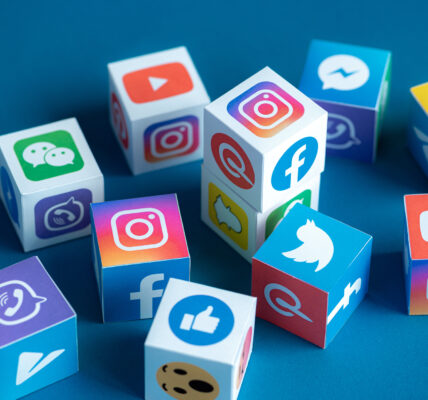The internet, a global network of interconnected computers, has become an integral part of our daily lives. Modern-day internet services have evolved dramatically since the early days of the World Wide Web. In this comprehensive guide, we’ll explore the fascinating journey of internet services, from their humble beginnings to the digital landscape we navigate today.

The Internet’s Humble Beginnings
- ARPANET: The precursor to the internet was ARPANET, a U.S. Department of Defense project launched in the late 1960s to connect computers at research institutions.
- Tim Berners-Lee and the World Wide Web: In 1989, Tim Berners-Lee proposed the World Wide Web, which introduced the concept of hyperlinked documents accessible via the internet.
- Early Web Browsers: The early ’90s saw the release of web browsers like Mosaic and Netscape, making the web more user-friendly.
- Dial-Up Connections: The internet was primarily accessed through slow, noisy dial-up connections in the early ’90s.
The Internet Services Revolution
- Search Engines: The mid-’90s saw the rise of search engines like Yahoo and Google, revolutionizing how people found information online.
- Email Services: Services like Hotmail and Yahoo Mail offered free email access, changing the way people communicated.
- E-commerce: Amazon and eBay emerged as pioneers in online shopping, reshaping retail and commerce.
- Social Media: Platforms like Friendster, MySpace, and later Facebook and Twitter, transformed how people connected and shared online.
- Streaming Services: Netflix disrupted the entertainment industry, shifting from DVDs to online streaming.
- Cloud Computing: Amazon Web Services (AWS) and others made cloud computing accessible for businesses, reducing the need for physical infrastructure.
The Mobile Revolution
- Smartphones: The introduction of smartphones, starting with the iPhone in 2007, made internet services accessible anytime, anywhere.
- App Ecosystem: The App Store (2008) and Google Play (2012) provided a marketplace for mobile apps, leading to a boom in app development.
- Mobile Internet: The evolution of 3G, 4G, and 5G networks significantly improved mobile internet speeds and connectivity.
- Location-Based Services: GPS and location-based services like Uber and Google Maps transformed navigation and on-demand services.
Modern Internet Services
- Search and Information: Google has become synonymous with internet search, offering a wide array of services, from Gmail to Google Drive.
- Social Media: Facebook, Instagram, and TikTok are dominant forces in connecting people and sharing content.
- E-commerce Giants: Amazon, Alibaba, and eBay continue to reshape the world of online shopping.
- Streaming and Entertainment: Netflix, Spotify, YouTube, and Twitch are leaders in streaming video, music, and live broadcasts.
- Messaging and Communication: WhatsApp, Messenger, and Slack have revolutionized how we communicate and collaborate.
- Cloud and Productivity Tools: Microsoft Azure, AWS, Google Cloud, and tools like Microsoft Office 365 have become essential for businesses.
The Internet of Things (IoT)
- Connected Devices: IoT devices, from smart thermostats to wearable fitness trackers, have proliferated, changing how we interact with our surroundings.
- Home Automation: Smart homes, enabled by devices like Amazon Echo and Google Home, offer convenience and automation.
- Industrial IoT: IoT has revolutionized industries, from agriculture to manufacturing, improving efficiency and data collection.
- Challenges: IoT also presents security and privacy challenges, as more devices collect and transmit data.
Future Trends in Internet Services
- 5G and Beyond: The rollout of 5G networks will bring faster speeds and lower latency, paving the way for new services and applications.
- Artificial Intelligence (AI): AI-powered services will become more integrated into daily life, from virtual assistants to content recommendations.
- Blockchain and Cryptocurrency: Blockchain technology will disrupt industries like finance and supply chain management, while cryptocurrencies gain wider acceptance.
- Edge Computing: Edge computing will bring processing closer to the source of data, improving latency and enabling real-time applications.
- Extended Reality (XR): Virtual reality (VR), augmented reality (AR), and mixed reality (MR) will offer new ways to interact with digital content.
- Sustainability: Sustainability will become a central concern, with a focus on energy-efficient data centers and reducing e-waste.
Challenges and Concerns
- Privacy and Data Security: The collection and use of personal data have raised concerns about privacy and security.
- Digital Divide: Access to high-speed internet remains unequal, creating a digital divide that hinders equitable access to internet services.
- Cybersecurity Threats: The internet is rife with cyber threats, from hacking to phishing, posing risks to individuals and organizations.
- Content Moderation: Social media platforms face challenges in moderating content and dealing with issues of misinformation and hate speech.
Conclusion
The evolution of modern-day internet services is a remarkable journey that has transformed the way we live, work, and communicate. From the early days of ARPANET to the rise of smartphones and the Internet of Things, the internet’s impact is undeniable. As we look to the future, technologies like 5G, AI, and blockchain promise to continue reshaping the digital landscape. While internet services offer tremendous benefits, they also come with challenges related to privacy, security, and equitable access. Navigating the ever-changing world of internet services requires both innovation and vigilance, ensuring that the internet remains a powerful force for positive change in our lives.





